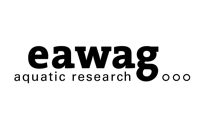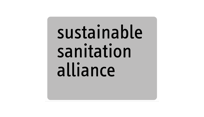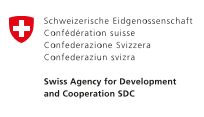Stages of the SWM service chain (also referred to as functional groups) are groupings of technologies that have similar functions. The SWM Technology Overview section describes four different stages from which technologies can be chosen to build a SWM service chain. Each stage has a distinct colour; technologies within a given stage share the same colour code so that they are easily identifiable. Additionally, the technologies within each stage are assigned a reference code with a single letter and number:
S - Storage
Technologies S.1 – S.3 refers to technologies that allow for the temporary holding of waste materials at or near the point of generation. It is usually the first step of the SWM service chain before collection and transport, treatment and recycling, and the final use or safe disposal. Without sufficient and functional storage at the point of generation, waste is scattered within settlements, leading to public health risks: the waste may never enter the SWM service chain. Storage of waste can occur directly at the household level but can also be transferred to communal and shared solutions. Waste storage in public areas is another option that can prevent littering and unmanaged waste deposits in public areas where household or communal storage does not provide sufficient coverage.
C - Collection and Transport
Technologies C.1 – C.5 refers to the processes of gathering waste from its point of generation, temporarily holding and moving it to a facility where it can be treated and recycled and finally used or disposed of. Collection and transport need to be reliable and regular; their capacity must be adjusted to the production levels of waste. Although primary/secondary products may need to be collected and transported between different functional groups, the most prominent gap is usually between storage and treatment and recycling. To simplify the service chain model, the transport of products between other steps of the chain (e.g. between treatment and the final use and disposal) is not displayedin the SWM service chain structure but may have to be taken into consideration.
T - Treatment and Recycling
Technologies T.1 – T.8 refers to technologies that promote circularity and value recovery from waste and reduce the waste amounts for disposal and the respective environmental and public health impacts. This section focuses on technologies for organic waste treatment and the recycling of plastics. Technologies for recycling other waste fractions (e.g. paper, metal, or glass) are purposely omitted. Due to their sophistication, energy requirements or required processing scale, it is unlikely that these recycling processes would be implemented in humanitarian settings by humanitarian actors but would instead be handed over to local market actors.
U - Use and Disposal
Technologies U.1 – U.12 refers to technologies and methods employed for the final use of the output products of the SWM service chain or – if use is not an option – the various options for safe or unsafe disposal. The recommended use and disposal options are listed in the SWM service chain structure in descending order of priority: whenever possible, the use of recovered valuable and usable materials is prioritised over safe disposal, and safe disposal of waste is prioritised over unsafe disposal. Although it is strongly recommended to avoid unsafe disposal options, they have nonetheless been included to highlight their disadvantages and as these practices might be applied at the onset of emergencies due to the lack of suitable alternatives.






